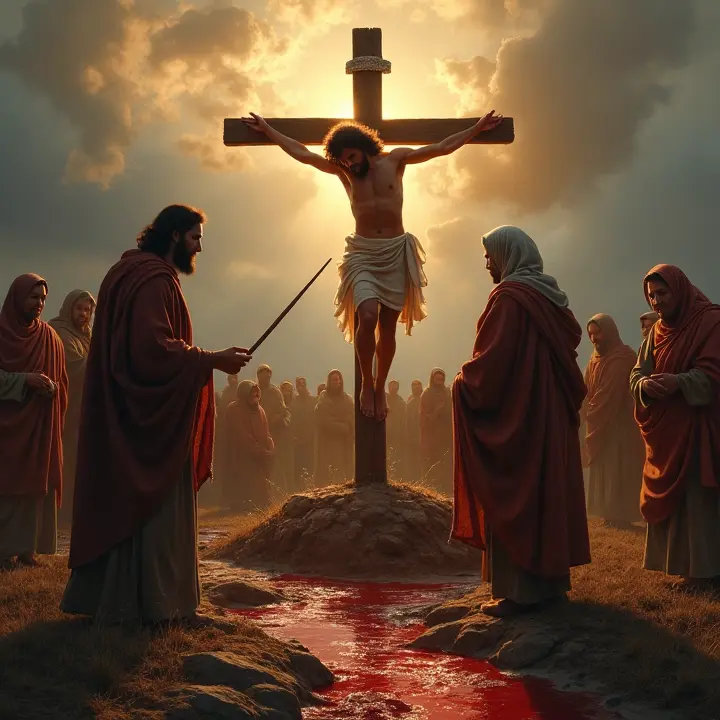The crucifixion of Jesus Christ is one of the most significant and poignant Stories in the bible, recounted in the Gospels of Matthew, Mark, Luke, and John. It is a narrative that captures the essence of sacrifice, love, and redemption, and it continues to resonate deeply with believers and non-believers alike.
The story begins with Jesus being led to Golgotha, also known as the Place of the Skull. According to Matthew 27:32, Jesus was forced to carry His own cross, a heavy and painful burden. However, as He struggled under its weight, the Roman soldiers compelled a man named Simon of Cyrene to help Him. Simon, who was merely passing by, became an unwitting participant in this momentous event. This detail underscores the unexpected ways in which individuals can be drawn into the unfolding of divine history.
As Jesus was nailed to the cross, the scene was one of immense suffering and sorrow. The Gospel of Mark 15:25 specifies that it was the third hour when Jesus was crucified. He was placed between two criminals, a detail that highlights His unjust treatment. Despite His innocence, Jesus was subjected to the same brutal punishment as those who were guilty of heinous crimes. This juxtaposition serves to emphasize the profound injustice of His crucifixion.
During His time on the cross, Jesus endured not only physical agony but also the emotional torment of being forsaken. In Matthew 27:46, He cries out, “My God, my God, why have you forsaken me?” These words reflect the depth of His anguish and the sense of isolation He must have felt. Yet, even in His darkest moment, Jesus remained steadfast in His faith and commitment to His mission.
The Gospel of Luke 23:34 adds a poignant detail: “Father, forgive them, for they do not know what they are doing.” This plea for forgiveness on behalf of His tormentors demonstrates Jesus’ extraordinary compassion and love. Even as He was being crucified, He sought to extend mercy to those who were responsible for His suffering. This act of forgiveness is a powerful reminder of the boundless love that characterizes His ministry.
As Jesus hung on the cross, a crowd gathered to witness the event. Among them were His followers, who were filled with grief and despair. The women who had accompanied Jesus from Galilee were present, watching from a distance. Their presence highlights the unwavering faith and devotion of these early believers, even in the face of overwhelming sorrow.
The crucifixion was not just a physical event; it had profound spiritual significance. In John 19:30, Jesus declares, “It is finished,” signifying the completion of His redemptive work. This statement encapsulates the purpose of His sacrifice: to atone for the sins of humanity and to offer the possibility of salvation. The crucifixion is the ultimate expression of God’s love and the cornerstone of Christian belief.
The Gospel of John also recounts the piercing of Jesus’ side with a spear, from which flowed blood and water. This detail has been interpreted as a symbol of the sacraments of the Church: the Eucharist and Baptism. It underscores the idea that through Jesus’ sacrifice, spiritual life and renewal are made possible.
As Jesus’ body was taken down from the cross, His followers were left to mourn their loss. However, the story of the crucifixion does not end with sorrow. It is a narrative of hope and redemption, pointing towards the resurrection that would follow. The crucifixion is a testament to the enduring power of love and the promise of new life.
In conclusion, the crucifixion is one of the most compelling Stories in the bible. It is a tale of sacrifice, forgiveness, and the triumph of love over suffering. The accounts in the Gospels of Matthew, Mark, Luke, and John provide a rich and multifaceted portrayal of this pivotal event. The crucifixion continues to inspire and challenge believers, reminding them of the depth of God’s love and the transformative power of faith.

